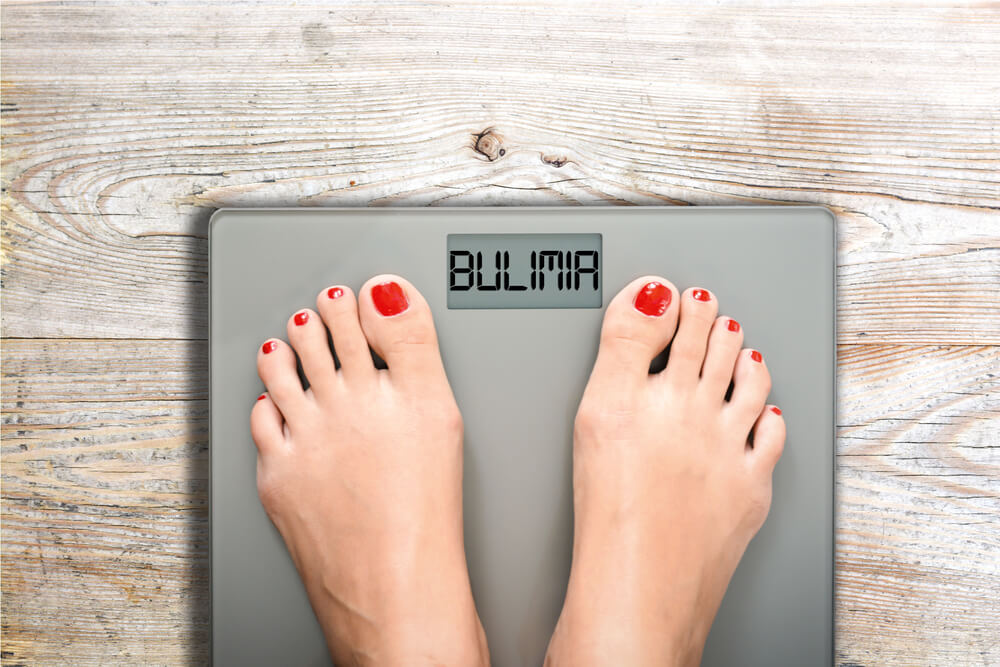
“Perhaps stating that ‘my problem is over’ is not entirely accurate. Bulimia for me is an , which is comparable to any other . As someone who was addicted to binging and purging and has now stopped this cycle; I have been termed a ‘recovering bulimic.'” — Markie LC Blumer, Ph.D., in 1993
“At the time that I wrote the previous entry, I believed that I would never truly be recovered from my eating disorder. At the time, bulimia did not plague me every day as it once had, but it was still a reoccurrence in the corners of my mind. Today, 15 years later, not only does bulimia no longer negatively affect my life, I know that I have completely recovered. Bulimia has not repeated itself over these years, and it will not do so in my future.” — Markie LC Blumer, Ph.D., in 2008
These two journal entries, written fifteen years apart, highlight how there is no one-size-fits-all definition of bulimia recovery. Even to the same person, at different stages of recovery, being “recovered” can mean two completely opposite things.
Some recovering bulimia patients believe that full recovery from bulimia is possible, while others believe they will have to struggle against their disordered thoughts and behaviors for the rest of their lives. As Dr. Blumer’s entries illustrate, it’s also possible for your definition of “recovery” to change as you progress through your eating disorder recovery journey.
This blog post explores the many faces of bulimia recovery, proving that it’s possible to be “recovered” without following the exact same path as other people you know who are also recovering from an eating disorder.
Stages of Bulimia Recovery
Because bulimia recovery looks different for everyone, it’s difficult to identify the exact stages of bulimia recovery. Still, that hasn’t stopped researchers from developing models to roughly explain the stages of eating disorder recovery.
These models aren’t perfect, but they offer some insight into the process of bulimia recovery, and how the definition of “recovery” changes throughout the life cycle. In this section, we’ll look at two of the most popular eating disorder recovery models, the Stages of Change Model and the Homeodynamic Recovery Model.
The Stages of Change Model
The Stages of Change Model of eating disorder recovery seeks to understand a person’s motivation toward change and recovery. There are five stages of change in this model, but it is important to acknowledge that these stages are not linear “steps” on a ladder toward recovery. Many people in bulimia recovery skip back and forth between stages, especially when they suffer a relapse.
The first stage is the Pre-contemplation stage. In this stage of recovery, someone with an eating disorder may remain in denial about the problem. They have little to no awareness of their disordered eating behaviors or the severity of their disorder. At this stage, patients usually do not want to change and may resist efforts to address their eating disorder with anger, frustration, or hostility.
The second stage is the Contemplation stage. At this point, someone with an eating disorder slowly begins to become aware of their problem, leading them to consider the benefits of changing their behaviors. However, their attitude is likely to fluctuate between wanting to change and wanting to maintain their disordered eating habits.
The third stage, Preparation & Determination, represents a patient’s decision to try to change their disordered eating. They will start to make the necessary preparations to begin recovery, which can be a stressful and anxious time for the patient. At this point, the patient will likely benefit from receiving support from a mental health professional.
The fourth stage is Action. Unlike the first three stages, the Action stage is less about shifting the person’s mindset toward recovery and more about taking concrete steps to achieve recovery. This is often the most difficult stage, as it requires the patient to step outside their comfort zone to change their disordered eating habits. In order to get through this stage, someone with an eating disorder requires strong support from loved ones and medical professionals. Relapse is common during this stage.
The fifth and final stage is Maintenance. A person with an eating disorder enters the Maintenance stage when they have successfully changed their disordered eating habits. They begin to build a life outside their eating disorder and learn to be comfortable in their own skin. The Maintenance stage requires ongoing commitment and effort from the patient. Relapse can occur during this stage, but the Maintenance stage can also last indefinitely if the patient makes a concrete effort to successfully achieve recovery.
The Homeodynamic Recovery Model
An alternative way of looking at eating disorder recovery is the Homeodynamic Recovery Model (HDRM). The HDRM views recovery as a holistic, flexible process, acknowledging that there are a number of ways for a person to successfully recover and adapt to life without an eating disorder. The HDRM primarily describes recovery in an inpatient setting but can apply to your life in the outside world, too. In the HDRM, there are four stages, or phases, of recovery from an eating disorder.
The first phase of the HDRM is initial re-feeding. This stage represents the process of refeeding and restoring weight to a healthy level, if a patient is underweight, and the changes that occur in the body during this time. In a hospital setting, patients may gain upwards of 30 lbs within the first two weeks of recovery. This natural healing process can be exhausting for patients, leading to fatigue, swelling, and pain. The HDRM stresses that patients should do what they can to accept the state of their bodies during this time, and give their bodies the rest they deserve.
The second phase is the neither/nor phase of recovery. During this time, a patient’s body changes shape with continued refeeding and weight gain. Maintaining recovery depends on them to wade through the difficult emotions associated with these changes in their bodies. Many patients continue to experience uncomfortable physical symptoms, as well as mental frustration with the recovery process, during this second phase of recovery. They may become bored with the recovery process, complaining that they are no longer hungry and expressing a longing to be “finished” with recovery.
The third phase of recovery is the must-be-done-by-now phase. At this point, a patient has restored their body weight to a healthy level and should seek outpatient support from a mental health professional. Many patients feel like their recovery has plateaued at this point and become frustrated with the lack of visible progress. People can become stuck in this phase of recovery if they do not receive the adequate support they need to retrain their brains and change their disordered eating behaviors at this stage.
The fourth and final phase of recovery is the high-risk phase. Patients are often encouraged to return to “normal” eating habits during this phase, which can trigger the risk of relapse. Sometimes, medical professionals become concerned with limiting the patient’s weight gain during this phase due to society’s prejudice against those living in larger bodies. This is what makes the fourth phase of recovery “high-risk” for so many patients: they must continually choose recovery despite societal pressures to the contrary. It is at this point in their recovery journey that patients must make the difficult decision to continue along their current path or to venture into the unknown depths of recovery and remission.
Is Full Recovery from Bulimia Possible?

You may have noticed that both the Stages of Change Model and the HDRM discuss a final phase of recovery. However, both models also note that it’s possible to become “stuck” at certain stages of the recovery process or to jump back and forth between stages.
This process of continually fighting relapse and choosing recovery can become frustrating to many bulimia patients, leading them to wonder if full recovery from bulimia is even possible. People often distinguish between being “eating disorder-recovered” and “in eating disorder recovery” to acknowledge the differences between being fully recovered and remaining stuck in the ED recovery process.
We’re here to assure you that full recovery from bulimia is definitely possible. However, it’s important to check any unrealistic expectations you may have about the bulimia recovery process. Recovery from an eating disorder takes time and commitment. When we become frustrated, bored, or impatient with the recovery process, it may seem easier or more exciting to turn back to our previous eating disorder behaviors.
In these moments, it’s important to continually choose recovery, rather than giving up, until the process of resisting eating disorder behaviors becomes second-nature. Eventually, with continued commitment to recovery, the little voice inside your head telling you to engage in eating disorder behaviors will become quieter and quieter until it completely disappears. When it no longer takes effort to resist eating disorder behaviors, because it no longer occurs to you to engage in these behaviors in the first place, it is a sign that you are fully recovered from bulimia.
You can increase your chances of achieving full recovery from bulimia by seeking help from a qualified mental health professional. A therapist will support you along your mental health journey and encourage you to keep going, even when the process of recovery feels difficult or boring. Contact The Meadowglade today to learn how we can support you on your journey toward a full recovery from bulimia.
